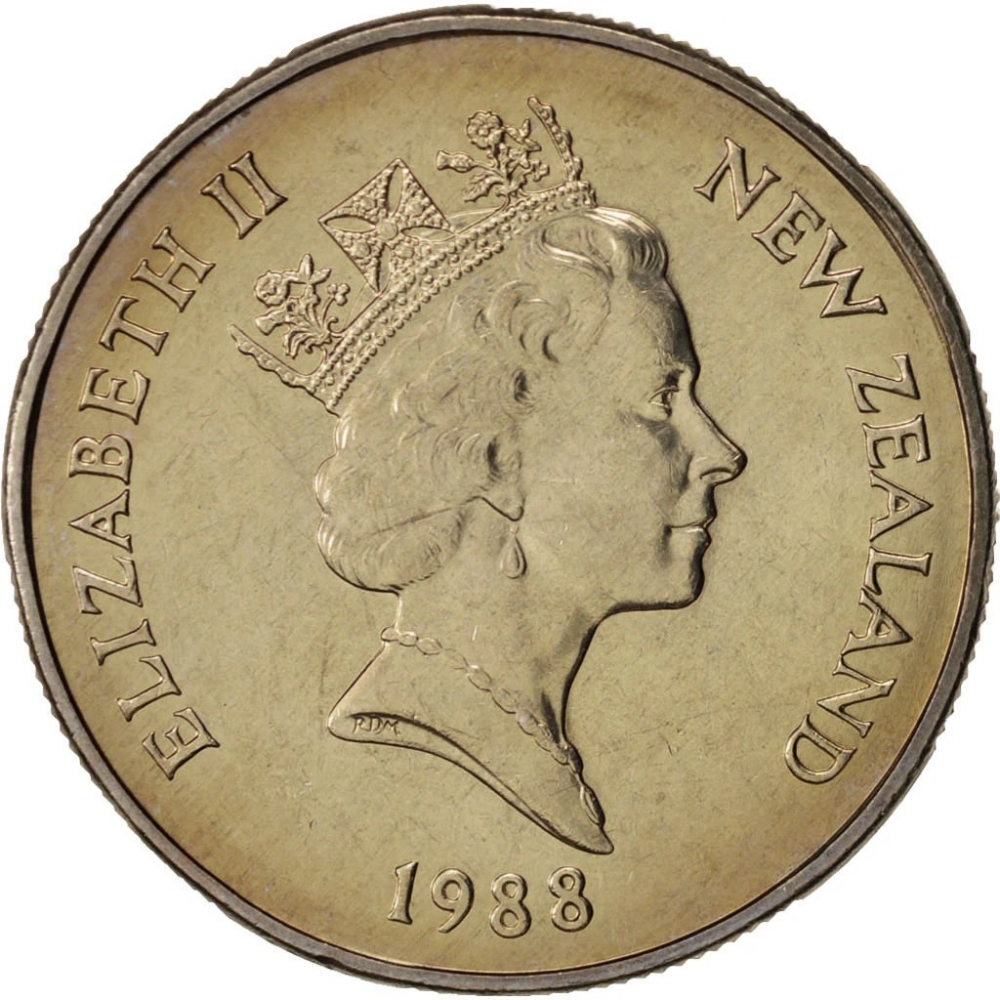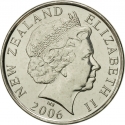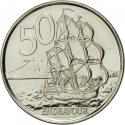You are about to finish your registration. Please check your mailbox (including spam folder). There should be a letter with a confirmation link. Check setting to make sure that your e-mail address is correct.
Send letter againDescription
1988 reverse die varieties: Die A has an additional sheet (rope) to the rigging of the Endeavour, Die B lacks this additional sheet and has different lettering for the engraver's initials to the right;
Obverse

|
Third crowned portrait of HM Queen Elizabeth II facing right, wearing the George IV State Diadem. ELIZABETH II NEW ZEALAND |
|---|---|
Reverse

|
Depicts the barque HMS Endeavour, commanded by Captain James Cook on his first exploration of the Pacific, sailing to the right, passing in front of Mount Taranaki (Mount Egmont), denomination above left, legend below. 50 |
| Edge |
50 Cents
3rd portrait
KM# 63
Characteristics
| Material | Cupronickel |
| Weight | 13.61 g |
| Diameter | 31.75 mm |
| Thickness | 2 mm |
| Shape |
|
| Alignment | Medal |
| Mints |
Royal Australian Mint (RAM) Royal Canadian Mint (RCM) Royal Mint
|





